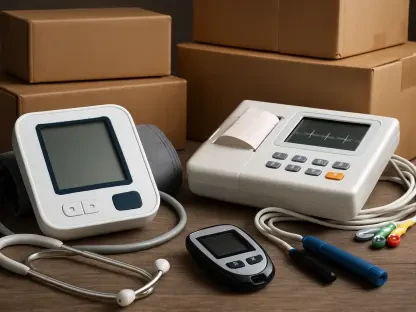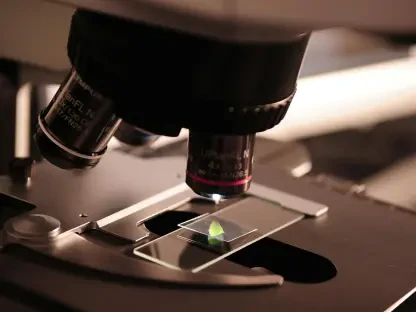The rapid advancement of 3D printing technology, commonly known as additive manufacturing, is significantly impacting the medical device industry by pushing the boundaries of patient care and innovative solutions. With the industry’s current value at an impressive $2 billion in 2022 and projections indicating a doubling to $4 billion by 2026, it is undeniable that medical device companies are increasingly embracing and investing in this technology to foster groundbreaking advancements. However, there are still several inherent challenges and limitations that need to be addressed to fully realize its potential in this sector.
The Versatility of 3D Printing in Medical Applications
One of the most compelling aspects of 3D printing in the medical field lies in its ability to produce customized prosthetics, implants, and surgical tools that precisely match the unique needs of individual patients. This high level of customization is revolutionizing the medical device industry by addressing specific requirements that traditional manufacturing methods often struggle to meet. For example, 3D printing enables the creation of prosthetics that fit better, function more efficiently, and provide greater comfort to patients.
Beyond prosthetics and implants, the potential for bioprinting holds immense promise for the future of medical technology. Bioprinting could, theoretically, enable the creation of custom tissues or organs for transplantation, offering a revolutionary solution to organ shortages and compatibility issues. Although this technology remains in the early stages of development, ongoing research and investment are driving progress in this area. The versatile nature of 3D printing continuously pushes the boundaries of medical innovation, paving the way for new therapeutic and surgical approaches that were once unimaginable.
Stratasys Direct’s Role and Achievements
Stratasys Direct, a prominent 3D printing service provider, has been a key player in the medical device industry, contributing to the sector’s growth through advanced 3D printing solutions. A significant milestone for the company was obtaining ISO 13485 certification for its manufacturing facility in Tucson, Arizona. This globally recognized standard for quality management systems in medical device manufacturing underscores Stratasys Direct’s commitment to quality and adherence to stringent standards. It not only reflects the company’s dedication but also enhances its credibility and reliability within the industry.
Looking ahead, Stratasys Direct plans to extend this certification to its other facilities in Texas and Minnesota, signaling the rising demand for high-quality 3D printing solutions. This strategic expansion underscores the growing reliance on additive manufacturing within the medical device sector. The commitment to achieving and maintaining such high standards highlights the crucial role that Stratasys Direct plays in driving innovation and ensuring quality in medical device manufacturing.
Insightful Perspectives from Industry Experts
During the 2025 MD&M West conference, Amy Vaughn, a manufacturing engineer at Stratasys Direct, provided valuable insights into the advancements and future prospects of medical 3D printing. Vaughn’s previous experience in silicone injection molding underscored the cost and design constraints of traditional manufacturing methods, highlighting the transformative potential of 3D printing for custom medical parts. She recounted an instance where traditional molding techniques rendered the development of multiple sizes of a product, such as a catheter for babies, prohibitively expensive, thereby limiting the ability to meet diverse patient needs.
Vaughn’s insights illuminate the significant limitations of conventional manufacturing and emphasize how additive manufacturing can address these challenges by enabling the production of highly customized parts. Additive manufacturing’s ability to turn complex designs into reality with minimal waste showcases its potential to revolutionize the medical device industry. Her perspective provides a real-world example of the impact that 3D printing can have on patient care, particularly in cases where traditional methods fall short.
Awareness and Adoption Challenges
Despite the extensive use of 3D printing technology in industries such as automotive and aerospace, the medical device industry is still in the process of fully recognizing and harnessing its potential. Vaughn noted that many professionals in the MedTech field are unaware of the sophisticated capabilities of additive manufacturing, which include producing complex geometries, intricate colors, and high-detail prints using materials like PolyJet and digital light processing (DLP). This knowledge gap highlights the need for greater education and awareness within the medical community to fully leverage the advantages of 3D printing technology.
To bridge this gap, industry leaders and experts must invest in educational initiatives and training programs that can help medical professionals understand and integrate 3D printing into their practices. These efforts are essential for the industry to adopt and comprehensively integrate 3D printing. Achieving widespread acceptance and utilization of additive manufacturing requires breaking down existing misconceptions and demonstrating the technology’s value and potential.
Limitations and Future Prospects
While 3D printing offers numerous benefits, it is not without its limitations. One significant drawback is its slower production speed compared to traditional manufacturing methods, particularly for large production runs. Injection molding, for instance, remains unmatched in terms of efficiency and cost-effectiveness when it comes to large-scale production after the initial investment. Vaughn acknowledged that injection molding allows for substantial batch production, which 3D printing currently cannot replicate with the same efficiency for larger quantities.
Despite these limitations, the future prospects for 3D printing in the medical device sector remain promising. Vaughn envisions a future where 3D printing could potentially replace injection molding, but acknowledges that this transition would require significant advancements in technology. Investments in automation and extensive research and development are crucial for overcoming current limitations and achieving efficient large-batch production. By optimizing the printing process and potentially integrating robotic arms to automate the removal of parts from printers, operational efficiency could significantly improve.
The Path Forward for 3D Printing in Medical Devices
The rapid advancement of 3D printing technology, also known as additive manufacturing, is dramatically transforming the medical device industry. It is pushing new boundaries in patient care and facilitating innovative solutions. As of 2022, the industry’s value stood at an impressive $2 billion, and projections suggest that this figure will soar to $4 billion by 2026. This indicates the growing adoption and substantial investment in this technology by medical device companies to drive groundbreaking advancements. However, several inherent challenges and limitations must be addressed to realize its full potential in this sector. These include concerns related to regulatory approvals, ensuring the quality and consistency of printed devices, and the need for highly specialized technical expertise. Addressing these issues will be crucial for maximizing the benefits of 3D printing, ultimately leading to enhanced patient outcomes and streamlined processes in the medical field.









